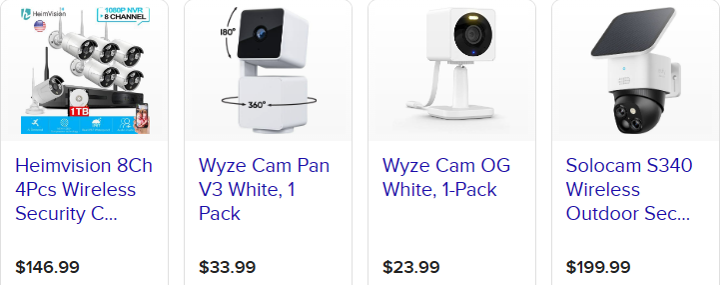
Know what you’re purchasing!
Everyone is selling a flavor.

The decision to add wireless security cameras to your home or business property is a wise one. The peace of mind associated with knowing a record of “what really happened” is available when necessary is a huge component of the value proposition most Americans base their decisions on. The ability to provide footage to substantiate or dispute issues that may involve law enforcement and/or the legal system are some of the more attractive features.
There are additional decisions to be made regarding the selection and purchase of a video surveillance system. Questions that should be answered well in advance are:
- What physical zones fall within the “must be covered” portion of your property? (Entryway, parking, cash register?)
- How many cameras are required to provide the coverage you desire?
- How long do you wish to be able to store video footage? This answer will have the largest impact on costs. Saving 24 hours of footage is far cheaper than saving 24 days of footage.
- Commercial or Consumer grade?
It is also extremely important to distinguish between “commercial grade” and “consumer grade” surveillance systems. Consumer systems are somewhat ubiquitous in every big box store, and they have their place in the market. One of the most important decisions here revolves around the “Availability” side of the good old “CIA Triangle of computer security. If a burglar or attacker interferes with your cameras’ ability to communicate with the storage server, you may find you have no video of an event that has transpired.
Intentionally jamming radio frequencies in the United States is illegal. In fact, simply building or possessing one is grounds for criminal charges. It’s not a stretch, however, to expect that individuals willing to commit one crime are more likely to be willing to commit another.
| Pros: | Cons: |
| Installation is much faster than traditional cabled installations. Software can often have you up and running in an hour or two. Software is often designed for quick access on your mobile devices. | Limited Wi-Fi Range or Coverage Many do not support Wi-Fi 6 or 7 Software features often require subscription. Online services increase your attack surface. Limited Battery Life WIRELESS SIGNALS CAN BE JAMMED! |
The illegality of jamming cellular or other forms of wireless communications in the United States is primarily covered under the Communications Act of 1934, specifically in Section 333. The relevant portion of the statute is as follows:
47 U.S. Code § 333 – Willful or malicious interference
(a) No person shall willfully or maliciously interfere with or cause interference to any radio communications of any station licensed or authorized by or under this chapter or operated by the United States Government.
(b) No person shall use, or operate any apparatus for the transmission of energy or communications or signals by radio within the United States, except under and in accordance with this chapter and with a license in that behalf granted under the provisions of this chapter.
(c) No person shall manufacture, import, sell, lease, offer for sale or lease, or ship devices or home electronic equipment and systems, or use devices, which fail to comply with regulations promulgated pursuant to this section.
(d) The provisions of this section shall not apply to any duly authorized officer of the United States, of any State, or of any political subdivision of a State, while engaged in the pursuit of his official duties, or to any person engaged in the interstate or foreign communication by wire or radio as a common carrier for hire, or to persons engaged in radio broadcasting as an interstate or foreign communication for hire.
It’s important to note that the Federal Communications Commission (FCC) is the regulatory body responsible for enforcing these regulations, and they have the authority to impose fines and other penalties for violations. The FCC may also issue rules and regulations regarding interference with wireless communications.

